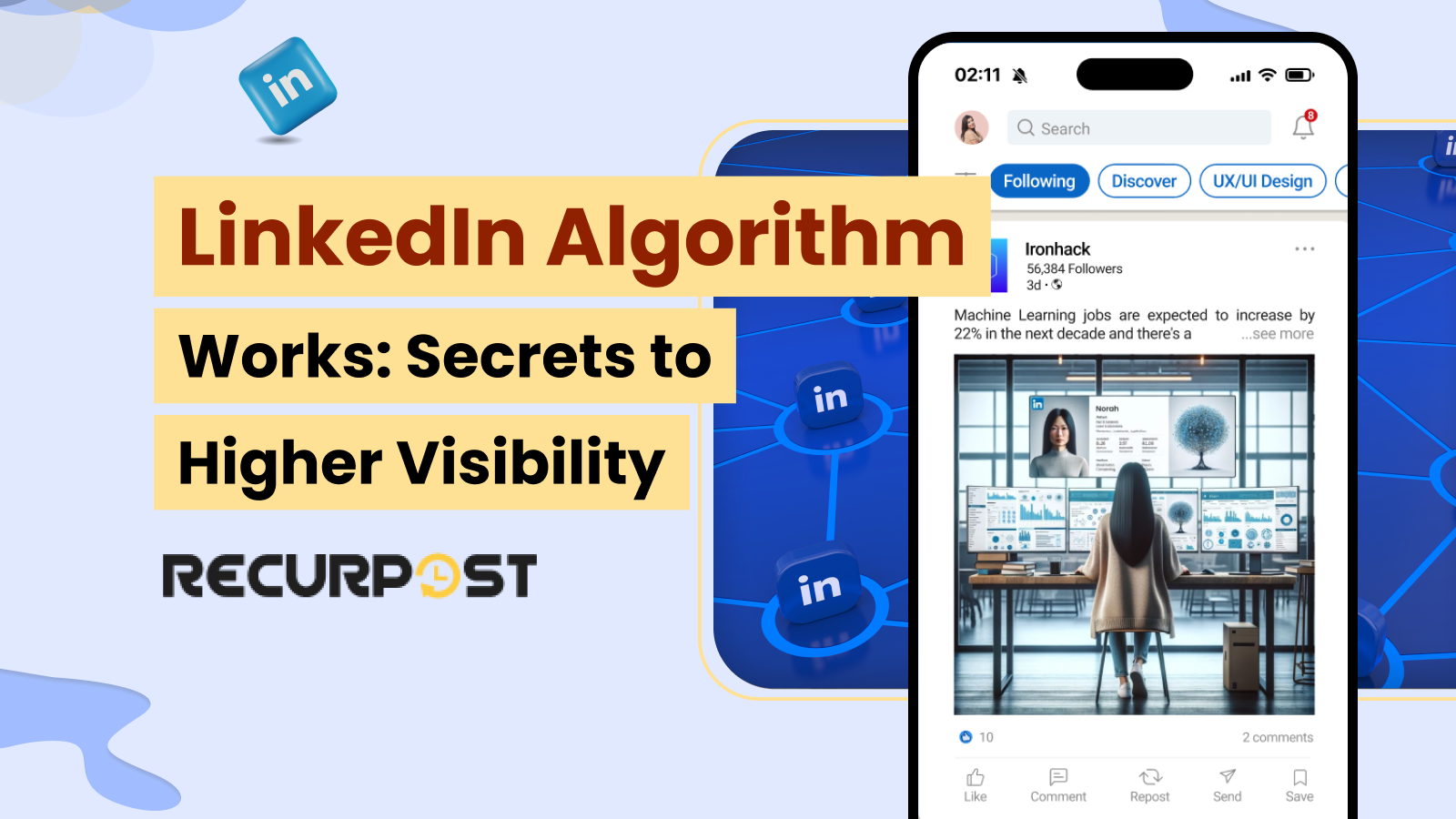Have you ever wondered how the LinkedIn algorithm determines the posts to be shown to you? The performance of your LinkedIn efforts heavily depends on the LinkedIn algorithm, though. In this way, you do not have to search for a specific topic on your own. It looks at what you post and finds more relevant content for you. It’s like having a personal assistant who knows everything you are interested in and tailors the content accordingly, including B2B LinkedIn content marketing.
Whether you are an expert in social media, a brand aiming to grow, or owning a company, having awareness of this algorithm can help your content prosper on LinkedIn.
Let’s break down how this works and how you can make it work for you.
What is the LinkedIn Algorithm?
The LinkedIn algorithm is a set of rules and signals that determine what content appears in users’ feeds and how much reach that content receives. Its primary objective is to show the most relevant and engaging updates to each LinkedIn member.
LinkedIn doesn’t just view posts chronologically. Instead, the algorithm analyzes various factors to prioritize content that is likely to spark meaningful interactions and conversations among professionals. This approach ensures that users see updates they find valuable and interesting, rather than being overwhelmed with irrelevant information.
By understanding how the LinkedIn algorithm works, you can create content that aligns with its ranking criteria, increasing the chances of your posts being seen by your target audience and fostering more meaningful connections on the platform.

Source: LinkedIn
How Does The LinkedIn Algorithm Works 2025?
Several key factors influence the 2025 LinkedIn Algorithm:
1. Content Quality
On LinkedIn, quality really matters. The best posts are original and grab people’s attention. Think about what makes you stop and read a post, that’s what works best. High-quality content gets people talking, sharing, and reacting. If you ever saw a post that lots of people liked or shared, that’s quality content in action.
Quality content on LinkedIn, or any platform, really shines when it has certain attributes. Here are some key qualities to consider:
- Relevance: It speaks directly to your audience’s interests, challenges, or industry trends.
- Value: Provides useful information or insights, teaches something new, or offers solutions to a problem.
- Authenticity: Reflects your genuine expertise and voice, and avoids sales or promotional tone.
- Visual Appeal: Includes images, videos, or infographics to break up text and add interest.
- Timeliness: Covers topics that are current or have a timeless appeal to your audience.
Focusing on these attributes can help ensure your content resonates with your audience and encourages engagement, which is favored by the LinkedIn post algorithm. Learn in detail on LinkedIn post size to become an expert.
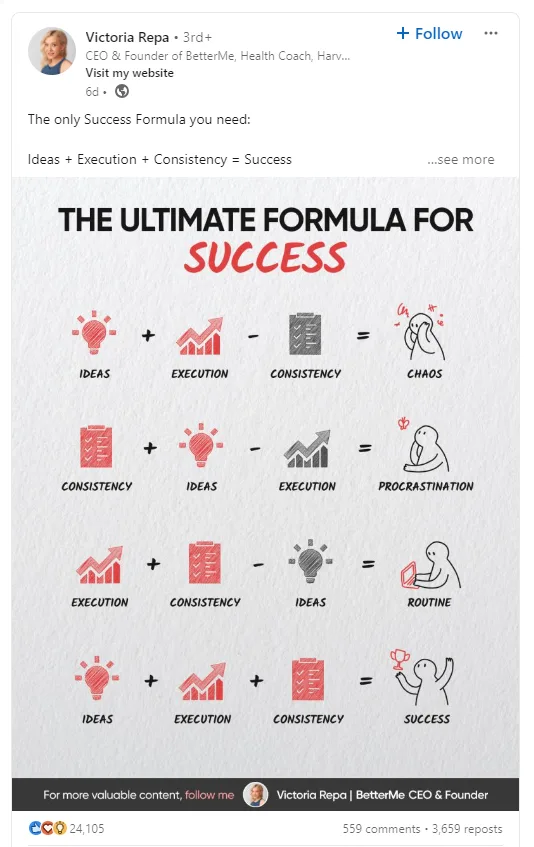
Source: LinkedIn
2. Engagement
How soon and how much people interact with a post can make a big difference in engagement relevance. The first hour after sharing a post is super important. It’s like the “golden hour” for your content. If people start liking, sharing, or commenting on your post during this time, LinkedIn thinks, “Hey, this is interesting!” And show it to more people. And after 4 hours, LinkedIn will boost the quality of content.
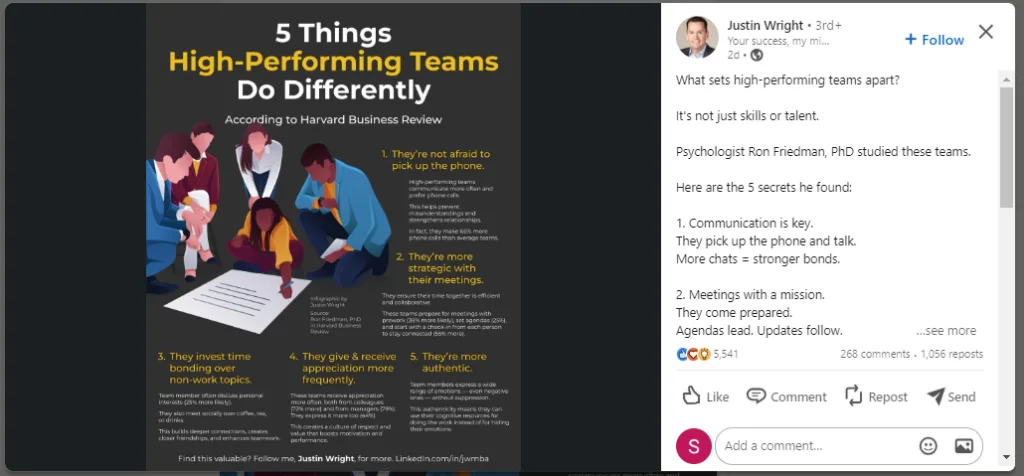
Source: LinkedIn
3. Connections and Relevance
Who you know and how relevant your post is to your network play a big role too. If you share something that’s interesting to the people you’re connected with, it’s more likely to get seen. LinkedIn likes it when your content resonates well within your network.
For instance, a post made a while ago by an IBM employee is becoming more and more popular. Because I followed the IBM company page, LinkedIn is alerting me to the fact that you should also check out this post, which is going viral.
Notification from LinkedIn:
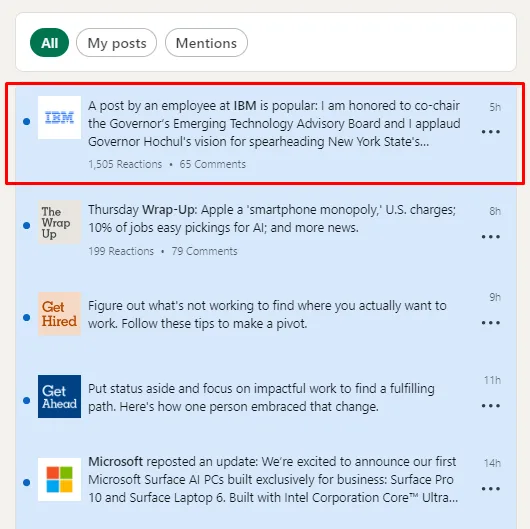
Pages I followed:
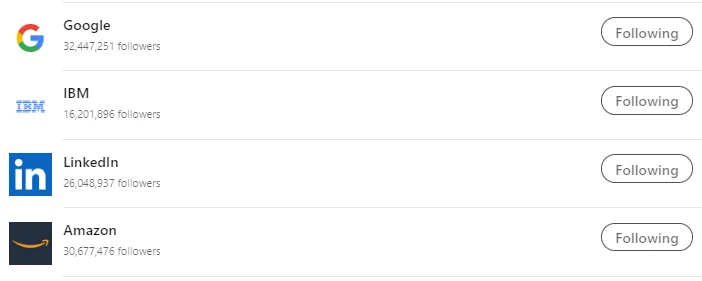
By understanding and optimizing for these key factors, you can increase the chances of your content being seen and engaged with by your target audience on LinkedIn.
Different Types of LinkedIn Algorithms
To understand LinkedIn’s various algorithms, it’s important to explore how they operate for different aspects of the platform:
1. LinkedIn Feed Algorithm:
This algorithm determines which posts appear in your feed, prioritizing:
- Relevance: Content related to your profile details (skills, experience, education), followed groups/hashtags, and past engagement (likes, comments, shares).
- Member Activity: Posts with high engagement (comments, shares) from your network rise in visibility.
- Author Credibility: Posts from established professionals or those with relevant expertise are favored.
- Timeliness: Recent updates and industry insights often take precedence.
Resource: Follow Feed: LinkedIn’s Feed Made Faster and Smarter
2. LinkedIn Search Algorithm:
This algorithm prioritizes search results that are relevant to your search query, considering:
- Keywords: Matching your search terms with titles, descriptions, skills, and experience.
- Profile Information: Optimizing your profile with relevant keywords enhances searchability.
- Network Connections: Search results might prioritize profiles within your network or connections.
3. Content Algorithm:
This algorithm prioritizes content that is likely to be valuable and uses based engagement for you, including:
- High-Quality Content: Well-written, insightful, and informative content rises to the top.
- Engagement: Content with comments, shares, and discussions receives a boost.
- Content Type: Visuals (images, videos) and well-formatted text tend to perform better.
- Alignment with Interests: Content related to previously engaged content and industry trends fares better.
4. LinkedIn Video Algorithm:
Similar to the content algorithm, videos are prioritized based on:
- Watch Time: Users completing videos signal engagement.
- Completion Rate: Videos watched all the way through are favored.
- Shares: Videos with high shareability gain visibility.
- Relevance: Videos aligned with your interests and industry trends receive higher rankings.
Learn more about the LinkedIn Short Videos here!
5. Meaningful Content Algorithm
LinkedIn emphasizes “meaningful comments” in their recent algorithm updates. This suggests a focus on:
- Thoughtful Engagement: Comments that add value to the discussion rather than generic praise are likely prioritized.
- Industry Expertise: Comments from users with relevant experience might hold more weight.
- Constructive Criticism: Constructive feedback can be seen as valuable engagement.
Resource: Viral Spam Content Detection at LinkedIn
6. LinkedIn Company Pages Algorithm:
This algorithm prioritizes content from companies you:
- Follow
- Have interacted with in the past (job postings, employee posts)
- Express interest in through industry or keyword searches
Additional Notes:
- While not an official algorithm type, LinkedIn actively filters spam and low-quality content.
- The specific details of each algorithm are likely to evolve over time.
By understanding these core functionalities, you can develop a stronger LinkedIn presence and reach relevant audiences.
Recent Changes to the LinkedIn Algorithm and Their Impact
Changes in 2024
LinkedIn regularly updates its algorithms to improve user experience and content relevance. Some of the latest changes include:
- Prioritizing Knowledge-Based Content: LinkedIn aims to surface more instructional and informative posts that share professional knowledge and expertise. This benefits users seeking insights to grow their careers or businesses.
- Prioritizing Network Impressions: The algorithm now emphasizes strengthening real-world connections by showing more updates from people you actually know and interact with professionally.
- More Personalized Content: LinkedIn is getting better at showing you what you like. It’s learning from every like, comment, and share to make your feed even more tailored to your interests.
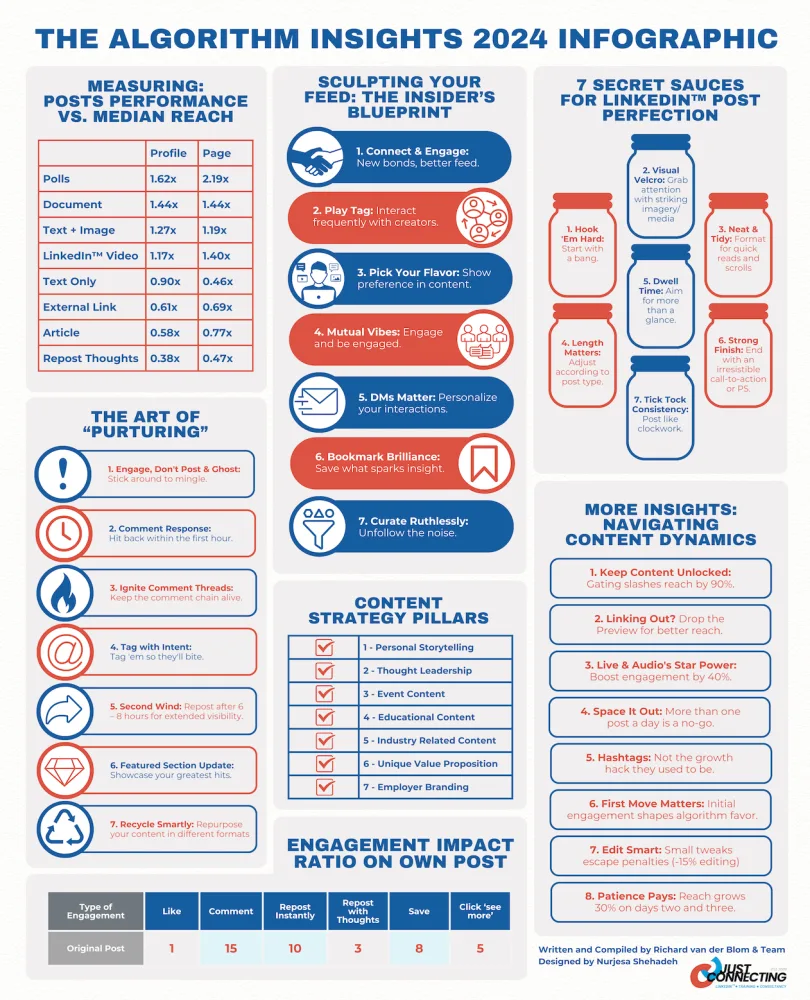
[ Source: LinkedIn ]
Changes you’ll see in 2025
- Strengthening Connections Between People You Know: The new algorithm focuses on strengthening relationships between users who already have connections. This means your content will be shown more to those in your network. Connections with mutual interests are 2.5 times more likely to engage with your posts.
- Maximize Your Reach with Better Connections: The LinkedIn algorithm update encourages sharing valuable insights that can increase your content’s reach among your followers. By focusing on meaningful engagement with people in your circle, your visibility on LinkedIn grows.
How to Adapt?
- Share actionable advice, industry insights, or professional tips.
- Engage actively with your current network to improve your post visibility.
- Use tools like RecurPost to manage and schedule your content effectively across LinkedIn and other social media platforms.
Comparative Analysis of LinkedIn Algorithm with Other Social Media Algorithms
While LinkedIn’s algorithm shares some similarities with platforms like Facebook and Instagram, there are distinct differences that set it apart:
- LinkedIn prioritizes professional content and connections over personal updates or entertainment. Its algorithm aims to surface updates relevant to users’ careers, industries, and business interests.
- LinkedIn’s feed is chronological by default, unlike Facebook algorithm that rely more heavily on machine learning to predict what users want to see.
- The LinkedIn algorithm does not like sharing links. Even sharing links as the first comment affects your reach. However, Instagram does not treat links as links, but they are simple text. Facebook treats links as links though.
This focus on professional content over purely social or entertaining content sets LinkedIn apart. It’s why LinkedIn encourages posts that offer insights or knowledge and why it’s working to make sure you see more from your professional network.
5 Powerful LinkedIn Marketing Strategies to Boost Your Online Presence
1. LinkedIn Profile: Building Strong
Your profile is your digital resume on LinkedIn. Start with a professional photo that makes you approachable. Write a headline showing your worth and expertise. Fill out your summary with a story about your professional journey, skills, and goals. Make sure to include relevant keywords that help you get found in searches.
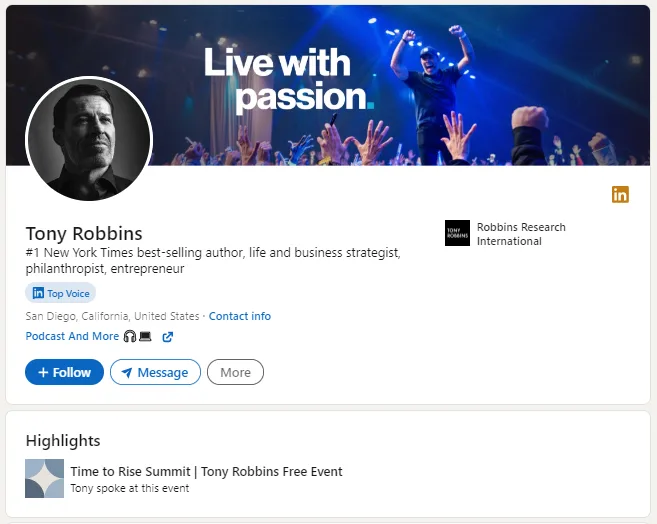
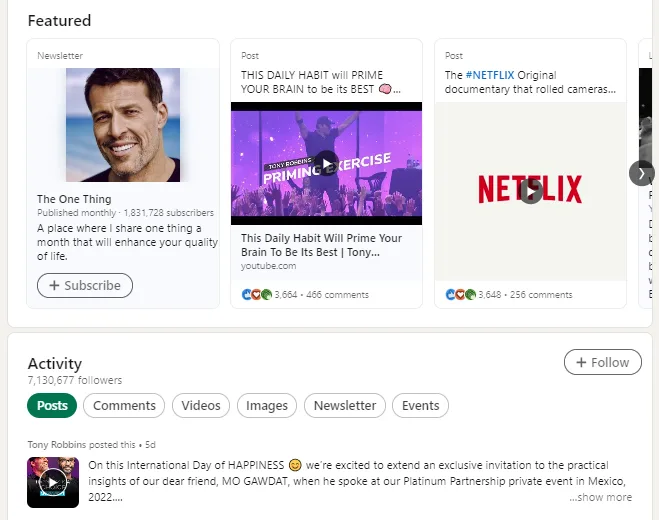
Source : LinkedIn
2. Post at Best Times
Timing matters on LinkedIn. Generally, posting during weekdays when professionals are active (think mornings and lunch breaks i.e. 11 am to 2 pm) leads to better engagement. Experiment to find what days and times work best for your specific audience.
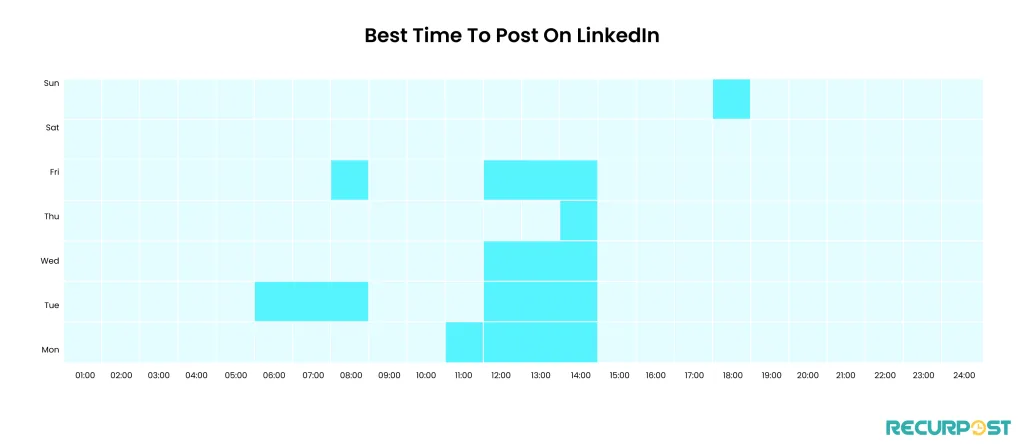
If you want to know in detail about the best times to post on LinkedIn, you can refer to our blog: Best and Worst Time to Post on LinkedIn
3. Content Types
LinkedIn users love a variety of content types, from insightful articles to engaging posts and informative videos. Articles establish your thought leadership, while posts keep you active in your network’s feed. Videos can capture attention in ways text cannot. Experiment with different content types and see what resonates with your audience. Check out the insights on the best content types with this –
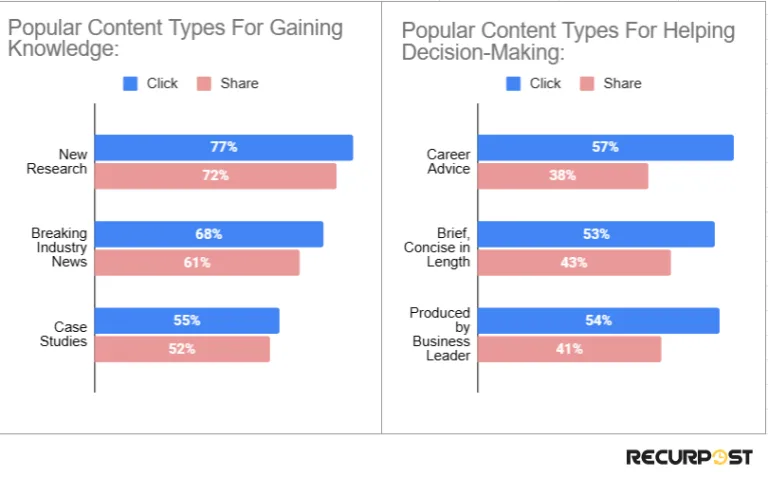
4. The Art of LinkedIn Engagement
To boost your LinkedIn Engagement and get more eyes on your posts – tag relevant connections and use strategic hashtags. Tags bring others into the conversation, while hashtags help your content get discovered by interested users. Don’t shy away from asking questions or sharing opinions to spark discussions.
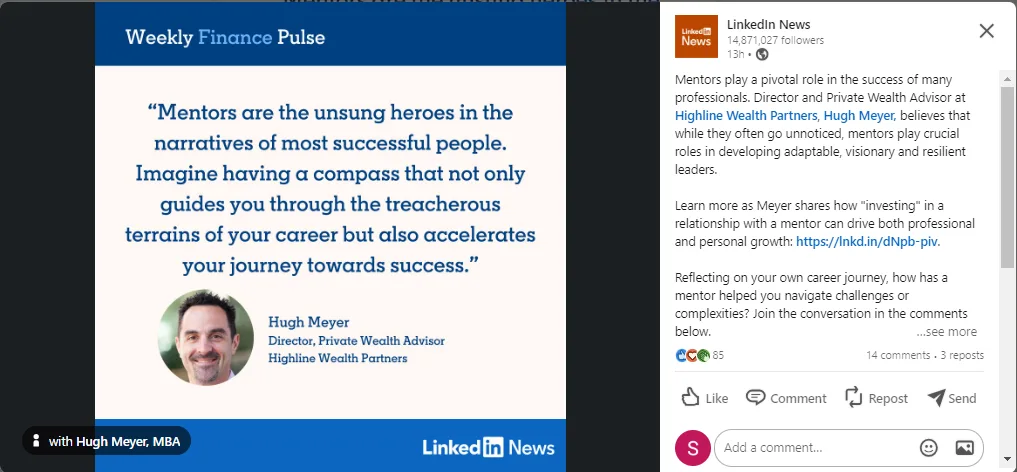
Source: LinkedIn
5. Avoiding Common Pitfalls
A common mistake is including too many outbound links in your posts. LinkedIn prefers keeping users on the platform, so posts with external links often get less visibility.
When compared to text or picture postings without a link, LinkedIn posts with links have between 55% and 60% less reach.
Source: LinkedIn
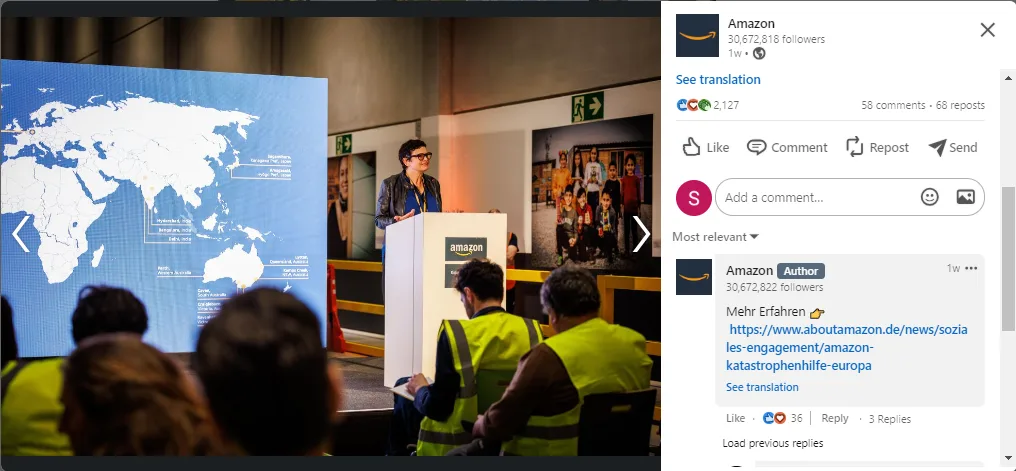
Source: LinkedIn
By crafting a strong profile, posting when your audience is active, mixing up your content types, engaging smartly, and steering clear of common traps, you’ll set yourself up for success on LinkedIn.
Analyzing and Optimizing Your LinkedIn Strategy
Simply posting on LinkedIn isn’t enough. You need to track LinkedIn activity log to know how your content is doing to make smart adjustments over time.
LinkedIn Analytics
LinkedIn offers built-in analytics that provide insights on things like:
- Reach: How many people saw your post?
- Engagement: Likes, comments, shares, clicks.
- Demographics: Who is your audience (job titles, locations, etc.)
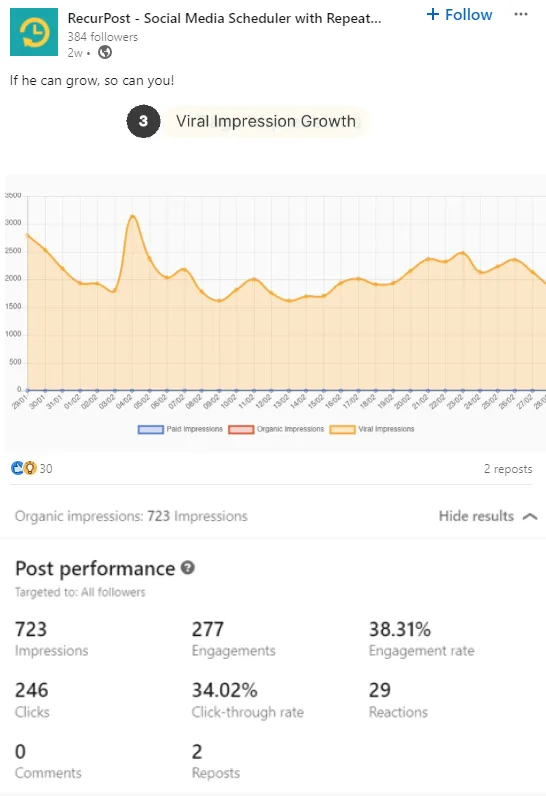
Iterating Your Strategy
Use this data to guide your future content creation:
- Successful Posts: What did your best-performing posts have in common (topic, format, timing)? Do more of that!
- Less Successful Posts: Did certain topics fall flat? Were posts at particular times less engaging? Adjust accordingly.
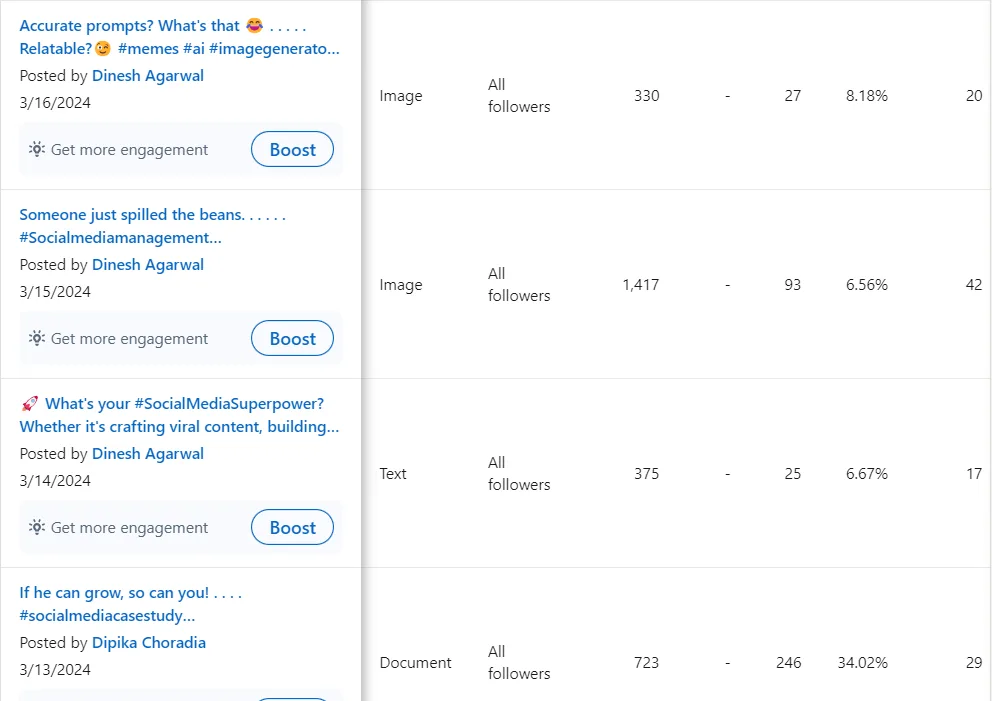
Success on LinkedIn takes a mix of understanding your audience, posting valuable content, and constantly improving your approach based on real-time performance. Keep learning from your experiences and your audience’s reactions to grow your presence on LinkedIn.
How to Find Viral Posts on LinkedIn?
Finding viral posts on LinkedIn can help you understand what’s resonating with your audience and inspire your own content. With over 930 million members on LinkedIn worldwide, it’s crucial to know what type of content drives engagement. Here’s how you can find those viral posts and make your content stand out:
1. Monitor Trending Hashtags: If you’ve ever wondered, Do LinkedIn hashtags work?—the answer is yes! Hashtags on LinkedIn are a great way to discover what’s gaining traction. Use tools like LinkedIn’s search bar to explore trending hashtags related to your industry. Additionally, With RecurPost’s LinkedIn post scheduler, you can easily discover the most relevant hashtags using its built-in features that suggest hashtags tailored to your content. For example, posts with hashtags like #Leadership, #Innovation, or #PersonalDevelopment often get significant engagement.
2. Check the “Top” Tab: When you scroll through your feed, LinkedIn offers a “Top” tab, where it highlights posts that are trending in your network. Posts that receive high engagement, such as likes, comments, and shares, often have viral potential.
3. Look for High Engagement: Posts with a high number of reactions (10k+ likes or comments) are typically going viral. In fact, the LinkedIn algorithm reports that posts with images or videos tend to get 3x more engagement than text-only posts. Pay attention to what kind of content—whether it’s videos, articles, or infographics—is driving this engagement.
4. Explore LinkedIn’s “Content Suggestions”: LinkedIn’s “Content Suggestions” tool can help you discover popular posts within your industry. This feature provides content that’s resonating with people in your niche, making it easier to spot viral trends.
5. Analyze Influencer Content: Follow industry influencers and thought leaders. Check out what types of posts they’re sharing and how their audience is responding. Influencers often know exactly what works on LinkedIn.
If you’re in B2B LinkedIn content marketing, keeping up with viral trends is especially important. Understanding what performs well can help you craft engaging posts that attract decision-makers and boost your brand’s authority.
Conclusion
As the LinkedIn Algorithm Explained, it might seem complex, but understanding its basics helps you get more out of the platform. Remember these key points:
- Focus on creating valuable and engaging content.
- Build strong connections within your industry.
- Track your results and adjust your LinkedIn content strategy over time.
LinkedIn is always changing, so stay curious! Experiment with content formats and keep an eye on updates to consistently reach your professional goals.
This strategy is just one factor influencing LinkedIn’s algorithm. For a closer look into social media algorithms, explore our guide: Social Media Algorithms Explained.
Frequently Asked Questions
1. Why am I not seeing more engagement on my LinkedIn posts?
Your engagement might be low if your content does not connect with your audience or if you’re posting at times when your audience is not active. Focus on creating valuable, high-quality content tailored to your audience’s interests and experiment with posting times to find when your audience is most engaged.
2. How can I make my LinkedIn posts reach a wider audience outside my network?
To reach a wider audience, use relevant hashtags to make your posts discoverable by more people. Engage with comments on your posts to fuel conversation and share your posts in relevant LinkedIn groups.
3. What type of content performs best on LinkedIn?
Content that adds value to your audience tends to perform best. This includes industry insights, professional tips, company updates, and thought leadership articles. Video content and posts that prompt discussions or questions also see higher LinkedIn engagement rates.
4. How often should I post on LinkedIn to stay visible without annoying my followers?
Posting once a day is ideal for staying visible. However, content quality is more important than quantity. Make sure your posts add value rather than posting frequently with less meaningful content.
5. Can using too many hashtags affect my LinkedIn post visibility?
Yes, using too many hashtags or irrelevant hashtags can negatively affect your post’s performance. LinkedIn recommends using no more than three relevant hashtags per post to ensure your content reaches the right audience effectively.
6. How do I know if my LinkedIn marketing strategy is working?
Check your LinkedIn analytics regularly to see how your LinkedIn marketing strategy is performing. Look at engagement rates, reach, and how your follower count changes over time. This data will tell you what’s working and what needs adjustment in your strategy.
7. Is it better to share links in LinkedIn posts or comments?
LinkedIn prefers keeping users on the platform, so posts with external links might get less visibility. If you need to share a link, consider placing it in the first comment of your post to avoid potentially reducing your post’s reach.
8. How to create a Bitly link on LinkedIn?
To create a Bitly link on LinkedIn, first shorten your URL on the Bitly website. Then, copy the shortened link and paste it into your LinkedIn post. It’s a great way to make your links cleaner and track clicks.
9. Can you see your liked posts on LinkedIn?
Yes, you can! To see your liked posts, go to your LinkedIn profile, click on “Activity,” and then select “Likes.” There, you’ll find a list of posts you’ve liked.
10. Does editing a LinkedIn post affect reach?
Yes, editing a LinkedIn post can affect its reach. When you edit a post, it may not get as much engagement as a fresh post because LinkedIn’s algorithm may treat it as a new update, which can reduce its visibility.
11. Why are my LinkedIn impressions going down?
Your LinkedIn impressions might be going down due to changes in the algorithm, less engaging content, or fewer interactions from your network. To improve impressions, try posting content that encourages engagement and reaches your target audience more effectively.
12. Can i block messages on linkedin?
Yes, you can block messages on LinkedIn! Just go to the conversation, click on the three dots, and select “Report or Block.” If you don’t want to block someone completely, you can also mute or archive the chat to stop notifications.

Saurabh Chaturvedi is a content writer at RecurPost. Specializing in social media management and marketing, Saurabh is dedicated to crafting engaging and informative articles. His passion for clear, exciting content keeps readers eager for more.
